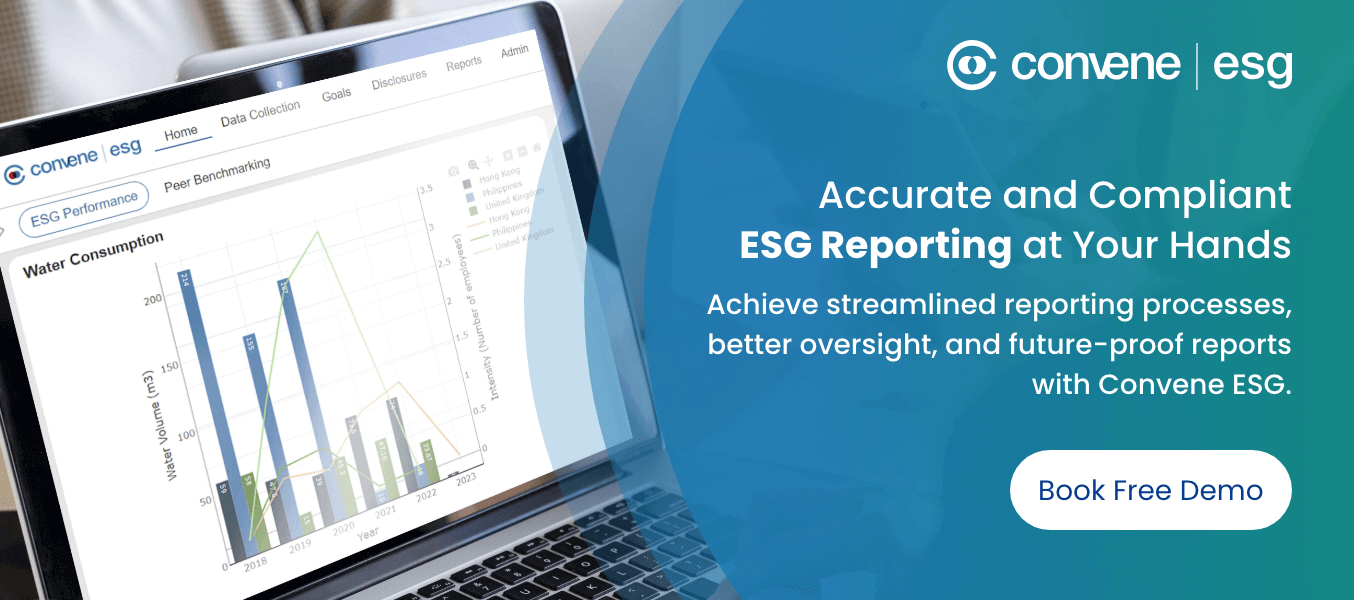There’s an urgent call to action when it comes to climate change. But many organisations don’t know how to start their journey to sustainability. A constructive first step is learning how companies measure carbon emissions, and greenhouse gas emissions in general, in order to develop effective strategies to minimise their carbon footprint.
In our quick guide, you’ll get a closer look at emission-reduction assets and methods showing you how to measure CO2 emissions.
The Importance of Measuring Greenhouse Gas Emissions

Environmental Protection
The most prevalent reason for measuring and monitoring carbon and greenhouse gas (GHG) emissions is their overwhelming contributions to global warming and climate change. The changes being wrought on the environment currently have expansive negative impacts on communities, ecosystems, and economies across the world. Consequently, measuring and minimising emissions is one of the most impactful steps organisations can take to protect the environment while remaining stable and profitable.
Regulatory Requirements
GHG emissions measurement and reporting is becoming mandatory or strongly recommended in a growing list of countries and jurisdictions across the world. Largely in response to the harmful effects of GHGs, governments have been introducing a number of regulations that require companies to report their environmental impacts. Measuring carbon footprint is therefore in the interest of every organisation that wants to operate in any region where ESG reporting and GHG reduction policies exist.
It’s Beneficial to Businesses
Measuring carbon footprints is simply good business. Higher CO2 emissions are often the most obvious sign of inefficient energy usage. Measuring emissions can help you identify valuable cost-saving opportunities, increasing your company’s viability and giving it a competitive edge. It’s also typically the first step in accessing the burgeoning carbon market, under which carbon credits can be sold, bought, or traded. As a bonus, it will burnish your company’s reputation in the eyes of increasingly climate-conscious investors and consumers.
How to Measure Greenhouse Gas Emissions
Measuring greenhouse gas emissions will differ depending on the size and type of the organisation in question, but it generally involves three basic steps.
- First, determine the scope and boundary of emissions across your organization’s value chain to be included in your GHG inventory.
- Then collect emissions data using carbon footprint calculators and other resources.
- Finally, calculate the overall emissions footprint.
As a rule, the most important GHGs to measure are carbon dioxide (CO2), methane (CH4), hydrofluorocarbons (HFCs), nitrous oxide (N2O), perfluorocarbons (PFCs), and sulphur hexafluoride (SF6). Of these, carbon dioxide is generally recognised as the most impactful, particularly in countries such as Singapore, where fossil fuels are extensively used.
Next, look at the following factors to calculate your total emissions:
- Electricity and gas consumption in kilowatt-hours
- Water usage measured in square metres consumed
- Fuel usage in gallons purchased
- Company travel as enumerated in miles travelled
- Disposed waste recycling in tons
This information will form a knowledge base of relevant data that can then calculate total emissions and devise strategies for reduction and mitigation. Furthermore, it’s important to consider scope 1, 2, and 3 emissions, in order to generate a more accurate estimate of your footprint.
Calculating Your Carbon Footprint
Once you’ve compiled all relevant data, you can begin measuring your carbon footprint. Usually, this is done by using a formula like this one:
Activity data x emission factor = GHG emission
The activity data is the usage, described in units, detailed in utility bills and operational expense reports. According to the Intergovernmental Panel on Climate Change, an emission factor is “a coefficient that quantifies the emissions or removals of a gas per unit activity. Emission factors are often based on a sample of measurement data, averaged to develop a representative rate of emission for an activity level under a given set of operating conditions”. In other words, this is the estimated impact of a GHG-releasing activity on the environment.
For example, burning a gallon of petrol releases 8,887 grams of CO2 into the air. Therefore, 100 gallons of petrol (the activity data) multiplied by 8,887 yields emissions of 888.7 kg. The final GHG emissions figures for each category are then added together to reveal the total footprint.
It’s possible to calculate each figure separately and through manual means. However, this can consume excessive amounts of time, energy, and funding for the personnel assigned to the task. A more efficient and cost-effective solution is to use a carbon footprint calculator, such as Convene 2zero.
Data points across a company’s value chain can be fed into this carbon footprint calculator to quickly and accurately estimate the total footprint in a set of clear, understandable figures. Only once you’ve developed a comprehensive picture of your firm’s emissions can you set up practices and systems to reduce them.
Convene 2zero: Your Essential Asset for Measuring Emissions Footprints

Measuring carbon footprints is one of the most constructive steps a company can take to prepare itself to meet the environmental challenges of the future. Get your organisation ready with Convene 2zero, a comprehensive carbon footprint calculator that’s fully integrated with Convene ESG.
Designed to support businesses in a broad range of sectors and industries, Convene 2zero allows you to set up customisable emission factors resulting in a flexible calculation function. Along with setting your scope, activity, type, and source, Convene 2zero will align your calculation with international standards such as GHG Protocol, UK Defra, and IPCC.
Learn more about Convene 2zero and Convene ESG, and how they can help you in calculating your carbon footprint and monitoring your emissions.















